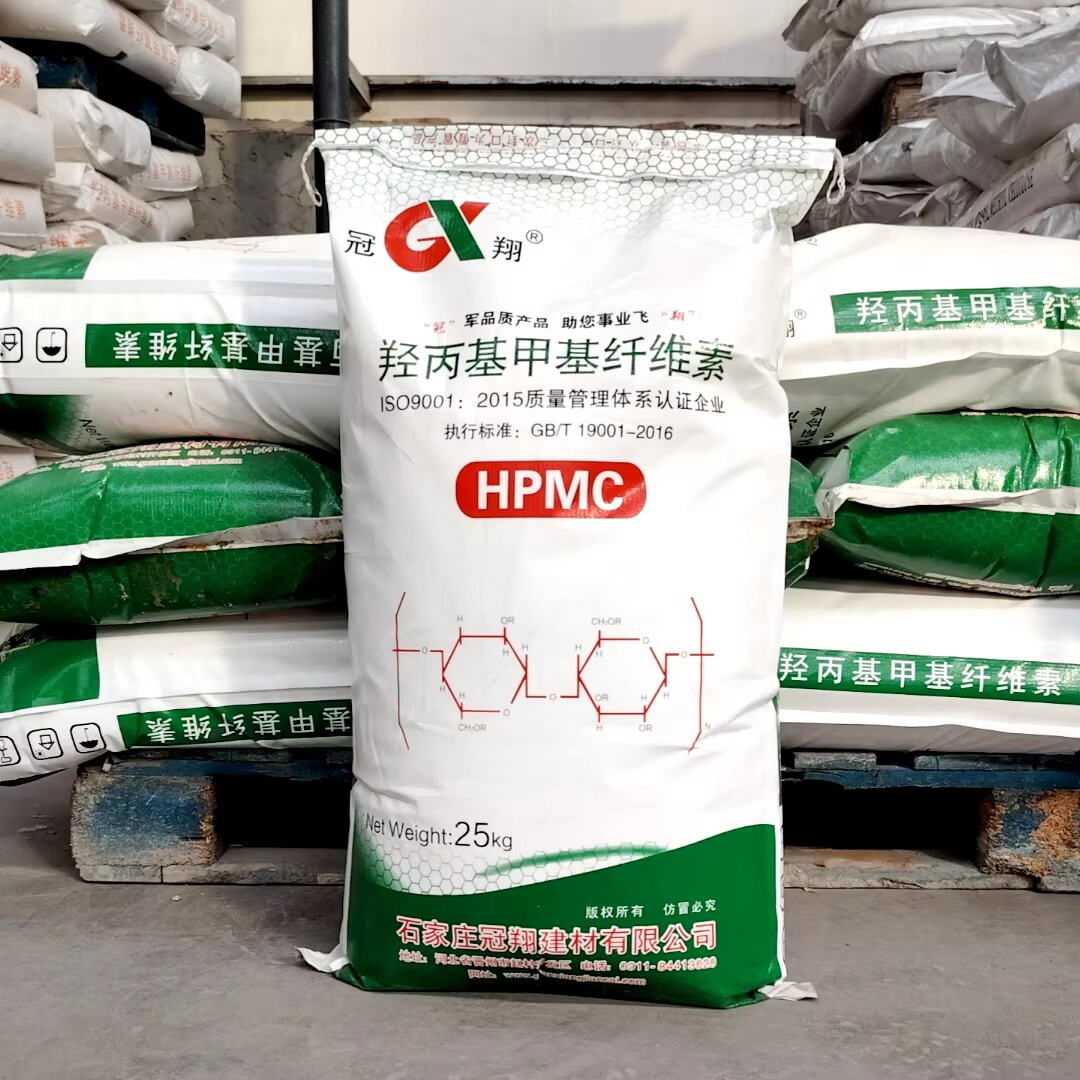تلعب لزوجة HPMC دورًا محوريًا في تحديد أداء المواد الأسمنتية. إنها تؤثر على خصائص حيوية مثل قابلية العمل، احتباس الماء، وسلوك مقاومة الانهيار. من خلال اختيار اللزوجة الصحيحة، يمكن للمهنيين في مجال البناء تحسين اتساق المواد وضمان نتائج تطبيق مثالية. يؤثر هذا المعامل بشكل مباشر على كفاءة ومتانة الأنظمة المعتمدة على الأسمنت.
ما هو HPMC ولماذا تعتبر اللزوجة مهمة؟
نظرة عامة على HPMC في المواد الأسمنتية
هيدروكسي بروبيل ميثيل سيلولوز (HPMC) هو بوليمر متعدد الاستخدامات يُستخدم على نطاق واسع في المواد الأسمنتية. يعمل كمادة حافظة للماء، ومُسَمِّك، ومستقر. يستخرج المنتجون HPMC من السليلوز، وهو بوليمر طبيعي، من خلال التعديل الكيميائي. تجعل خصائصه الفريدة إضافته ضرورية في مواد البناء مثل لواصق البلاط، والجير، والغراء.
في الأنظمة الأسمنتية، يعزز HPMC التفاعل بين الماء وجزيئات الأسمنت. هذا التفاعل يحسن من قابلية العمل العامة للمادة ويضمن ترطيبًا متساويًا. كما أن قدرته على الاحتفاظ بالماء تمنع الجفاف المبكر، مما قد يؤدي إلى تشققات أو تقليل القوة.
أهمية لزوجة HPMC
تحدد لزوجة HPMC سلوكه في الخلطات الأسمنتية. توفر درجات اللزوجة الأعلى احتفاظًا أفضل بالماء وخصائص مقاومة للانزلاق، مما يجعلها مثالية للتطبيقات الرأسية. من ناحية أخرى، تعمل درجات اللزوجة المنخفضة على تحسين قابلية التدفق وسهولة التطبيق. يضمن اختيار درجة اللزوجة المناسبة أن تلبي المادة متطلبات الأداء المحددة.
يعتمد المحترفون في البناء على لزوجة HPMC لتحقيق توازن بين قابلية العمل والقوة. يؤثر هذا المعامل بشكل مباشر على عملية المعالجة، مما يضمن أن تحقق المادة صلابة ودوامًا مثاليين.
كيف تؤثر اللزوجة على سلوك HPMC في الخلطات
تؤثر لزوجة HPMC على كيفية تفاعلها مع المكونات الأخرى في الخليط. تشكل HPMC عالية اللزوجة فيلمًا أكثر سمكًا حول جزيئات الأسمنت، مما يبطئ تبخر الماء ويعزز كفاءة المعالجة. كما أنها تحسن مقاومة الخليط للانهيار، خاصة في التطبيقات الرأسية أو العلوية.
من ناحية أخرى، تسمح HPMC منخفضة اللزوجة بتدفق أفضل وقابلية انتشار. وهذا يجعلها مناسبة للتطبيقات التي تتطلب تغطية سلسة ومتساوية. من خلال فهم هذه التأثيرات، يمكن للمهنيين تخصيص الخلطات لتلبية احتياجات البناء المحددة.
التأثيرات الرئيسية لزوجة HPMC على المواد الأسمنتية
قابلية العمل وسهولة التطبيق
تؤثر لزوجة HPMC بشكل كبير على قابلية العمل للمواد الأسمنتية. تخلق الدرجات عالية اللزوجة خلطات أكثر سمكًا، مما يحسن الاستقرار أثناء التطبيق. هذا مفيد بشكل خاص للمشاريع التي تتطلب وضعًا دقيقًا، مثل لاصقات البلاط. ومع ذلك، تعزز الدرجات منخفضة اللزوجة من قابلية التدفق، مما يجعلها مثالية لتطبيقات مثل المونة ذاتية التسوية.
احتباس الماء وكفاءة المعالجة
تعتمد خصائص احتباس الماء لـ HPMC بشكل كبير على لزوجته. تبطئ HPMC عالية اللزوجة من تبخر الماء، مما يضمن ترطيبًا مطولًا لجزيئات الأسمنت. تعزز هذه العملية كفاءة المعالجة وتمنع مشاكل مثل التشقق أو انخفاض القوة. بالمقابل، قد تحتفظ HPMC منخفضة اللزوجة بماء أقل لكنها لا تزال تدعم معالجة كافية في سيناريوهات البناء السريعة. يضمن الاختيار الصحيح ترطيبًا مثاليًا وديمومة على المدى الطويل.
خصائص مقاومة الانحناء في التطبيقات الرأسية
التطبيقات الرأسية، مثل تلييس الجدران، تتطلب مواد ذات خصائص قوية لمقاومة الترهل. يوفر HPMC عالي اللزوجة السماكة اللازمة لمنع الترهل أو الانزلاق أثناء التطبيق. إنه يثبت الخليط، مما يسمح له بالالتصاق بقوة بالأسطح الرأسية. وهذا يضمن إنهاءً سلسًا وموحدًا، حتى في الظروف الصعبة.
احتجاز الهواء وتناسق المواد
تؤثر لزوجة HPMC أيضًا على احتجاز الهواء داخل الخلائط الأسمنتية. تحبس الدرجات عالية اللزوجة المزيد من الهواء، مما يحسن تناسق المادة ويقلل من الانكماش أثناء المعالجة. وهذا يؤدي إلى منتج نهائي أكثر كثافة وموحدًا. بينما تكون الدرجات منخفضة اللزوجة أقل فعالية في احتجاز الهواء، إلا أنها لا تزال تساهم في الحفاظ على نسيج سلس وأداء موثوق.
الآليات وراء أداء HPMC
التفاعل مع الماء وجزيئات الأسمنت
يتفاعل HPMC مع الماء وجزيئات الأسمنت لتعزيز أداء المواد الأسمنتية. عند خلطه مع الماء، يذوب HPMC ويشكل محلولًا لزجًا. يغطي هذا المحلول جزيئات الأسمنت، مما يخلق حاجزًا يبطئ من تبخر الماء. يضمن الطلاء ترطيبًا متساويًا، مما يحسن من قوة المادة ومتانتها.
كما أن البوليمر يثبت الخليط من خلال تقليل الانفصال. تظل جزيئات الأسمنت موزعة بشكل متساوٍ، مما يمنع التكتل أو الاستقرار غير المتساوي. تؤدي هذه التفاعلات إلى مادة أكثر سلاسة وتناسقًا، مما يجعلها أسهل في التطبيق وأقل عرضة للعيوب.
اللزوجة وتكوين الفيلم في الترطيب
تلعب لزوجة HPMC دورًا حاسمًا في تكوين الفيلم أثناء الترطيب. مع شفاء الأسمنت، يشكل HPMC فيلمًا رقيقًا على سطح المادة. يحتفظ هذا الفيلم بالرطوبة، مما يسمح لعملية الترطيب بالاستمرار لفترة ممتدة. يؤدي الترطيب المطول إلى تحسين الترابط وزيادة القوة الانضغاطية.
يخلق HPMC عالي اللزوجة أفلامًا أكثر سمكًا، وهي مثالية للتطبيقات التي تتطلب احتفاظًا محسّنًا بالماء. تحمي هذه الأفلام أيضًا المادة من العوامل البيئية، مثل الرياح أو الحرارة، التي قد تسبب الجفاف المبكر. والنتيجة هي هيكل أكثر متانة ومرونة.
موازنة اللزوجة وقابلية التدفق
تحقيق التوازن الصحيح بين اللزوجة وقابلية التدفق أمر ضروري للأداء الأمثل. يحسن HPMC عالي اللزوجة الاستقرار والالتصاق ولكنه قد يقلل من سهولة التطبيق. تعزز الدرجات منخفضة اللزوجة قابلية التدفق، مما يجعلها مناسبة للمهام التي تتطلب تغطية سلسة ومتساوية.
يجب على المهنيين في مجال البناء تقييم المتطلبات المحددة لكل مشروع. من خلال اختيار درجة اللزوجة المناسبة، يمكنهم ضمان أن المادة تلبي احتياجات الأداء والتطبيق. هذا التوازن أمر حاسم لتحقيق نتائج متسقة عبر سيناريوهات البناء المختلفة.
تلعب لزوجة HPMC دورًا حيويًا في تعزيز أداء المواد الأسمنتية. إن تأثيرها على قابلية العمل، احتباس الماء، خصائص مقاومة الترهل، وتغليف الهواء يضمن نجاح البناء. يسمح اختيار درجة اللزوجة المناسبة للمهنيين بتحسين كفاءة المواد، مما يحقق نتائج متسقة عبر تطبيقات متنوعة ويعزز جودة المشروع بشكل عام.
 EN
EN
 AR
AR
 CS
CS
 DA
DA
 NL
NL
 FI
FI
 FR
FR
 DE
DE
 EL
EL
 HI
HI
 IT
IT
 JA
JA
 KO
KO
 NO
NO
 PL
PL
 PT
PT
 RO
RO
 RU
RU
 ES
ES
 SV
SV
 IW
IW
 ID
ID
 SR
SR
 SK
SK
 UK
UK
 VI
VI
 HU
HU
 TH
TH
 TR
TR
 AF
AF
 MS
MS
 CY
CY
 IS
IS
 BN
BN
 LO
LO
 LA
LA
 NE
NE
 MY
MY
 KK
KK
 UZ
UZ


